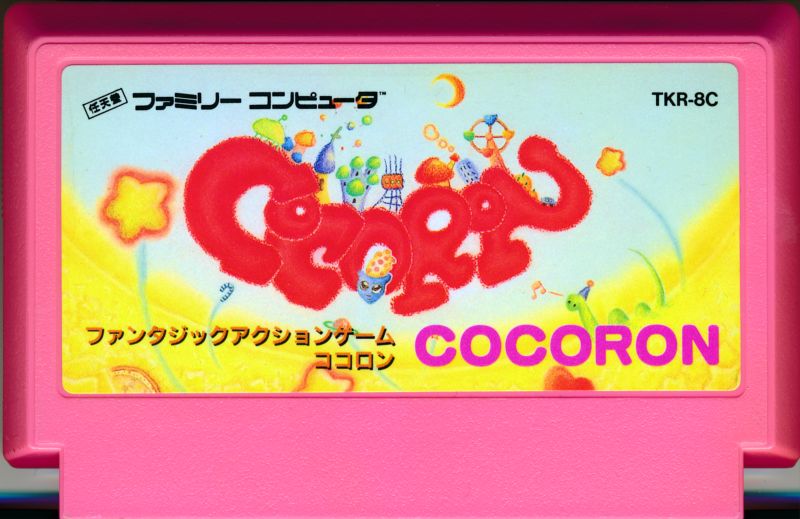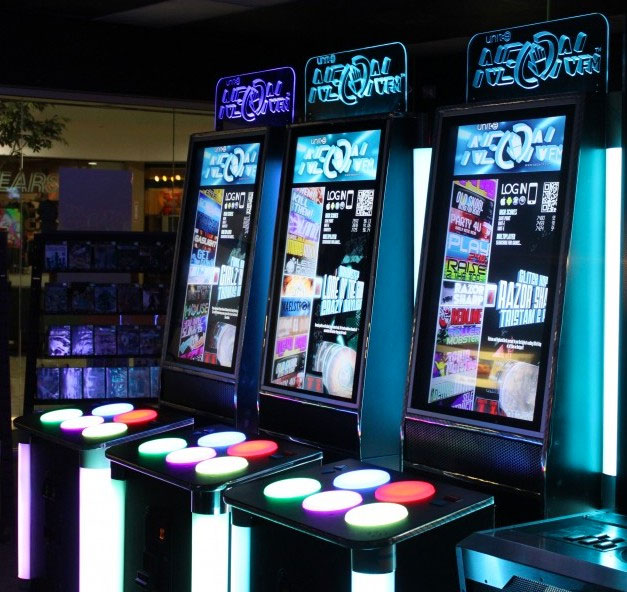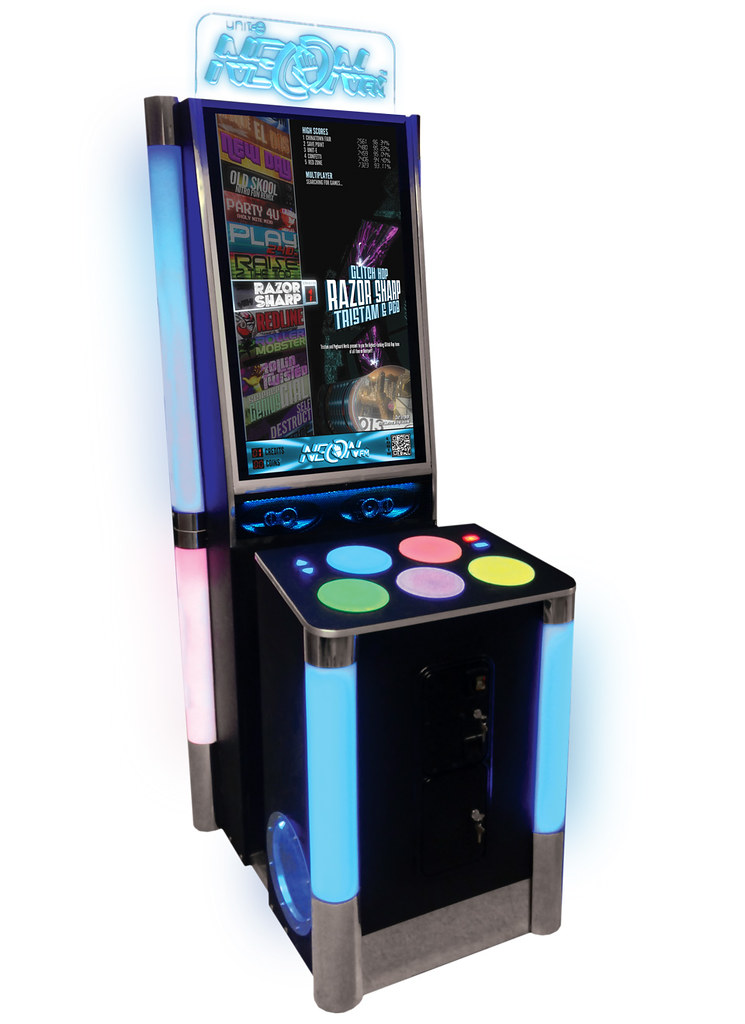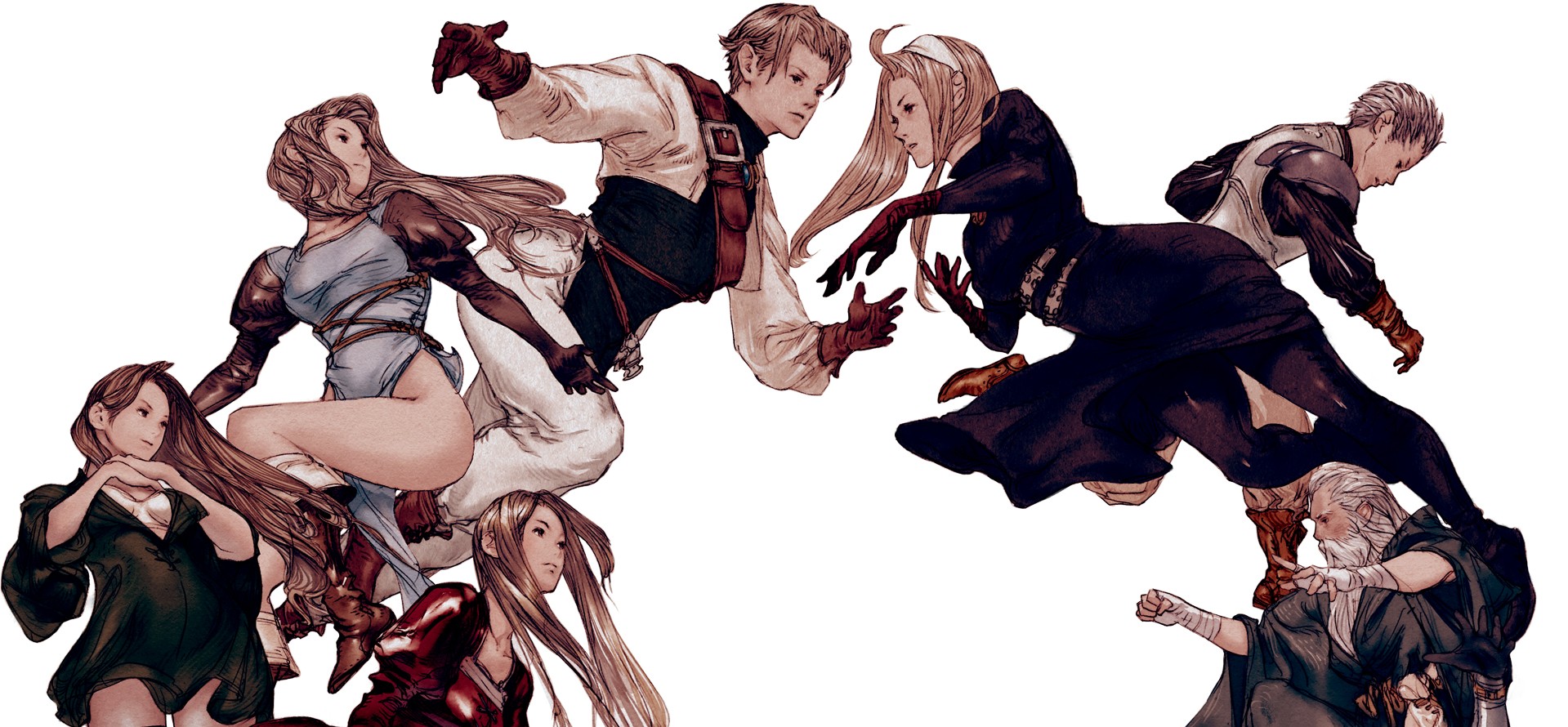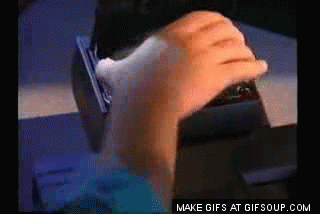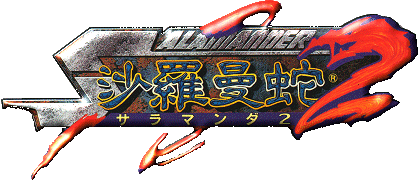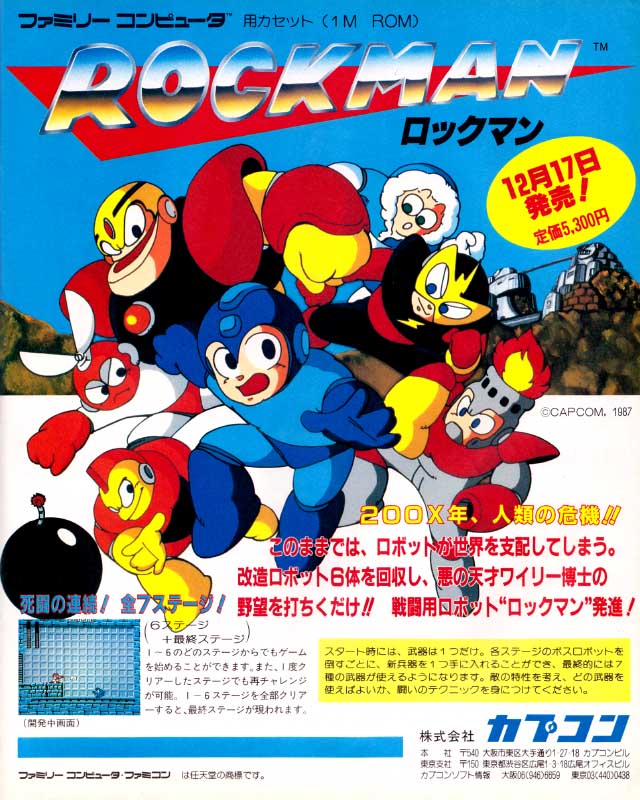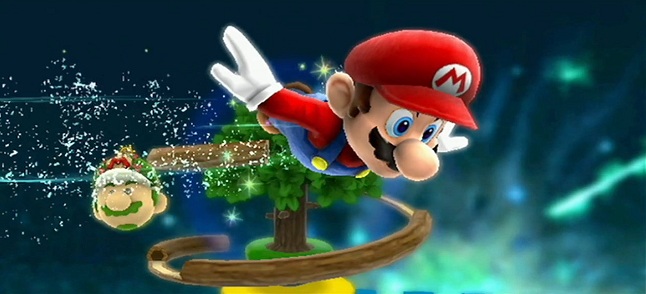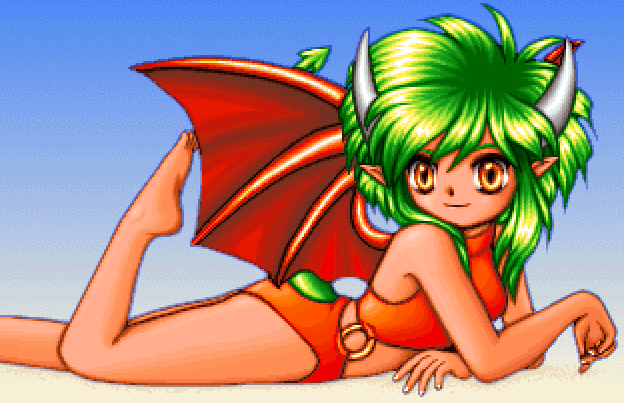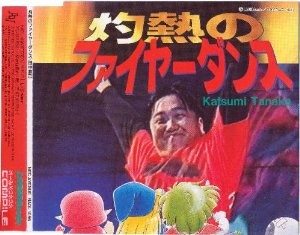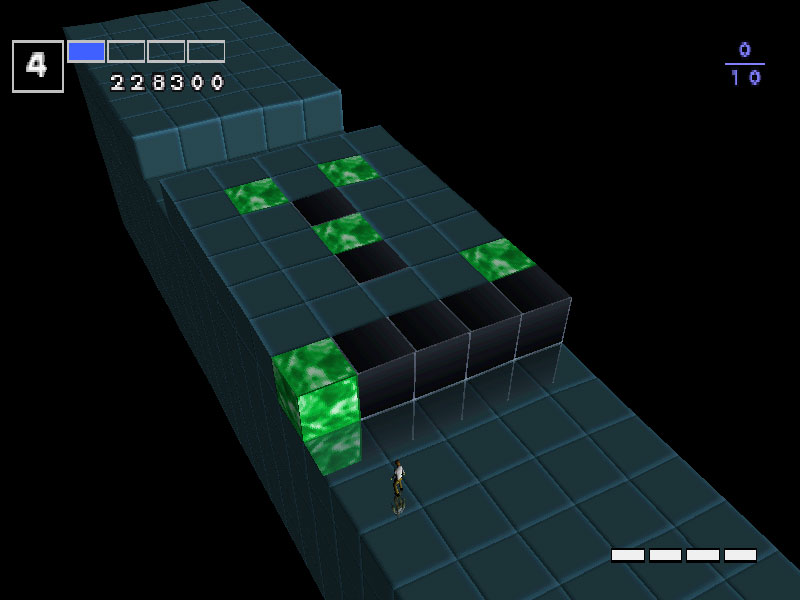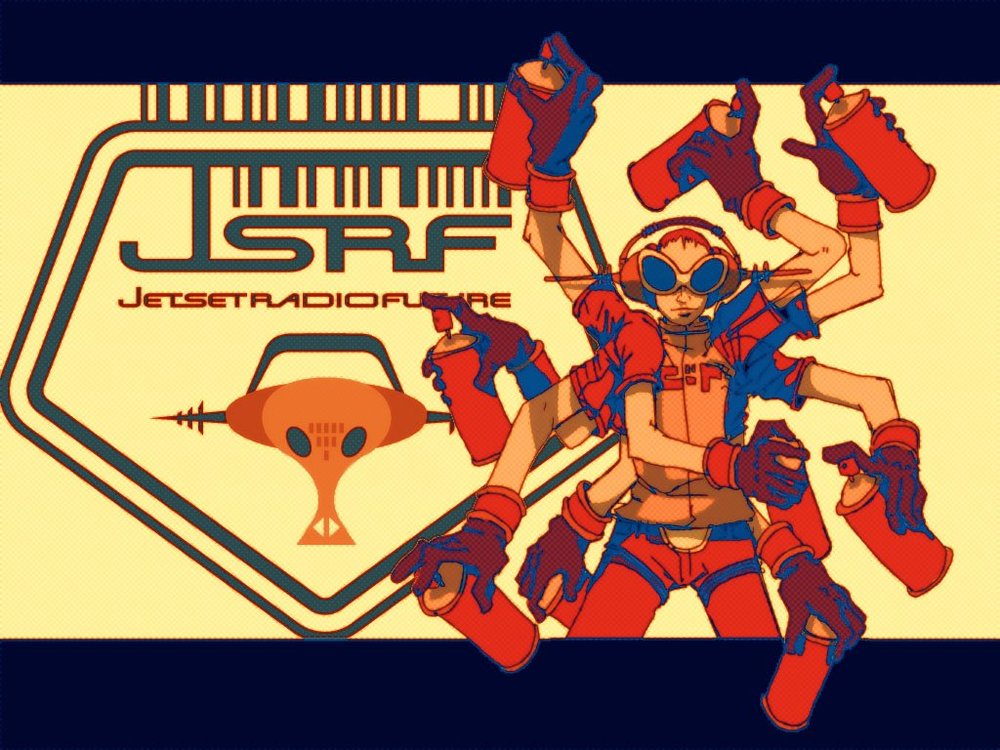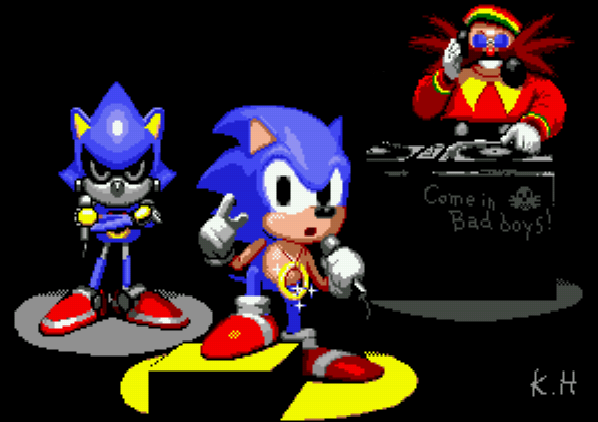I once again attended MAGfest this year, and had a wonderful time presenting panels alongside LordBBH. (Check out the videos of our panels!) My good friends from Brave Wave Productions were also in attendance, and this year they brought Takashi Tateishi as a guest. Tateishi-san has had quite an interesting career: working on one of the most beloved soundtracks ever in Megaman 2, lending his composition skills to cult favorites at Takeru, and doing a whole mess of sound work at Konami in the late 90s. I’m extremely happy to have had the chance to sit down and chat with him about his career. Read on for some interesting anecdotes about early game music development… and also learn about the rarest official Megaman music release of all time.
Game Music
Game Music Highlight: Neon-FM
Hello, folks. It’s been a while! I’ve been chronicling some of the issues we’ve been facing here on gaming.moe over the past couple months over on Patreon and a bit on Twitter, but we’re almost, almost in the clear now! Older pieces may be looking strange for a while until I get all the kinks ironed out, but thus far, our move to a different image server is going well. Nothing can put a stop to true gaming love. Nothing!
I have a ton of stuff in the backlog that I’m going to trickle out over the next couple weeks (including one fantastic interview I’m super hyped for), but I feel like the best way to get the ball rolling again is with the kind of utterly weird stuff this site is (somewhat) known for. Brace yourselves, folks — this one’s a doozy.
The other day, I was chatting with LordBBH about videogaming stuff, as I tend to do. I forget what the subject we were originally on was, but eventually conversation turned to a particular song from a music game called NeonFM.
I actually wasn’t aware of NeonFM until BBH told me about it, but as I’m prone to do once some random game catches my interest, I began to research the hell out of this thing. As it turns out, NeonFM is game with a long and interesting history. See, back in the early 2000s, hype for all things Bemani was at a fever pitch and arcades were overrun with groups of players who loitered around to play whatever versions of Dance Dance Revolution and Pump It Up were available to them. Dance Dance Revolution was the game that would help keep arcades on life support for a few more years: it was a tremendous hit in North America and drove a lot of interest in early music games, even inspiring people to import other Bemani titles that hadn’t been released Stateside.
There was a lull, however, between 2002 and 2006, with no new versions of DDR hitting arcades as Konami’s Bemani team focused on games that were doing better in their Asian markets: Pop’n Music, Beatmania IIDX, and GuitarFreaks/DrumMania. Seeing an opening in the market for a new arcade dance game, a group of rhythm game fans got together under the name Pop’nko (later changed to Unit-e Technologies), planned out a new dance game called NeonFM, and attracted investors and distributors to help finance and manufacture the game.
Of course, you can’t have a music game without music, can you? Well, the NeonFM team had a few connections throughout the rhythm game community, and they managed to put together a bunch of original songs to feature in the game. There’s one song in particular, however, that I think deserves to be highlighted, because its very existence baffles me.
I’m warning you now, readers: there’s no going back from this point.
If you’re prepared to experience real music gaming tunes, then click below.
Game Music Highlight: Tactics Ogre (but it’s really a lot of words about “improving” chiptunes)
Things happened when CD-ROM was introduced to gaming in the late 80s. Look at this new technology, they said! 600-some megabytes — not megabits, megaBYTES — of storage, more than any human being could ever need! Cinematic video with REAL VOICES! And, oh my gosh, actual CD-quality audio played right off the disc itself! Forget those bleeps and bloops from FM synth, you could get actual ORCHESTRAS playing music for a video game! WOOOOOOWWWWW!
Indeed, the moment you’d put on Ys Books I and II for the Turbografx CD and watch the opening cutscenes play, people would be stunned. Game characters were animated and actually talking! The music was amazing! Yet the price tag on CD game technology then was so prohibitive that only the kids with the richest parents could possibly afford it, even after the prices began to come down in the early 90s and more CD consoles began to hit the market. That barrier to entry and the low install base of CD systems made a lot of developers wary of investing significantly in developing CD-based games. More than a few of them opted to take a “safe” route: low-cost ports of cartridge games to CD with some added cutscenes, maybe a handful of new levels or something else taking advantage of additional tech, and, of course, a redone soundtrack. This practice persisted well into the 32-bit generation: you can find quite a few ports of 16-bit console games (and Japanese PC games of the era) to the PlayStation and Saturn, and even the 3DO.
To young game music nerd me, the idea of new soundtracks was perhaps one of the most appealing points of these platforms. I never owned a Turbo CD or Sega CD when they first came out, much less something crazy like a 3DO. But boy, was I ever jealous! I’d beg the people I knew with Sega CDs (because seriously, nobody my age owned a Duo) to record the soundtracks off their games for me onto cassette. Yet somehow, when I actually heard most of this music, I’d come away disappointed more often than not — especially with the redone chiptune music. Something about the chiptune-to-“real”-music conversion just felt off.
Of course, now that I’m older and am not trying to constantly justify my hobby’s legitimacy, I fully understand that sound chips of old hardware are instruments in themselves, capable of producing distinct, powerful sounds that make fantastic songs — these compositions have no need to be orchestrated and played with anything else to be recognized as true music.
Where am I going with all this? Well, I’ve been thinking a lot lately about how these attempts to make “enhanced” chiptune soundtracks frequently turn out to be disappointing — including a fairly recent example, in my opinion, does a disservice to one of my favorite 16-bit-era compositions.
Game Music Highlight: Salamander 2
I’ll be real here: I’m not a huge fan of most of Konami’s shooters, mainly because most of the stuff from the Gradius school of design punishes you harshly for any matter of mistake. I do, however, really like the Salamander/Life Force series, mainly because it doesn’t have those checkpoints placed strategically in the areas most impossible to clear when you’re powered down to nothing. (I also dig Gradius V for the same reasons.) Oh, and also because the soundtracks in them are amazing.
Gradius’s release in 1985 came at a time when sound hardware was beginning to evolve to a point where musicians could make songs that were far more musically complex than the 10-second loops ripped off of some public domain ditty. Konami was one of the leaders of this zeitgeist in the arcades alongside Namco, Sega, and Taito, and Gradius was among the first games that made people sit up and take notice of what game music could sound like. Hell, it was impressive from the point where you booted it up and waited for that bubble memory to heat up.
The musical legacy continued throughout the series and into its spin-offs, which brings us to Salamander 2, released in 1996. This was just a couple of years before Konami would begin releasing games like Beatmania and Dance Dance Revolution, and future Bemani maestro Naoki Maeda (along with arranger You Takamine) was already beginning to hone his craft in the game’s many uptempo, synth-heavy tunes. In fact, there’s one tune from Salamander 2 that I’m sure the VJ crowd knows very well, and it’s this one!
This song, “Sensation,” was remixed and later appeared in Keyboardmania 3rd Mix (and the PS2 home port, Keyboardmania II, which contains music from the arcade 2nd and 3rd Mix). This was not done by Maeda, but rather Shinji Hosoe, who has had a long and fruitful career in game music (and is one of the key figures behind game music label SuperSweep).
I’ll be honest: I don’t really like this particular remix. I know, I know, it’s sacrilege to say you don’t like a Shinji Hosoe song… or a piece of Bemani music. But something about it just feels off. Maybe it’s the different instrument samples sounding kinda weird, or maybe because it hits so many of my arranged game music pet peeves (“let’s cut out the backing instruments here, it’ll sound great!”).
But you know what? Sensation isn’t even my favorite Salamander 2 song. It’s this one, from later in the game:
It’s got that same fast tempo and heavy synth, but a very different mood to it: it feels more trepidatious, because now you’re further along in the game and shit has gotten real. If Sensation is all about “HELL YEAH LET’S KICK SOME MID-90S PRERENDERED CG ENEMY ASS,” Speed is like “Well crap, we’re really in this one for the long haul, aren’t we? Hope you’re ready.” There’s also a something kind of big and sweeping about it, especially when you hit that bridge of music before the track loops. Pretty great, if you ask me.
Naoki Maeda, like a lot of key Konami talent, is off doing other things these days: last I heard, he was at Capcom working on an arcade game called Crossbeats Rev. (I don’t remember even seeing this one on my last Japan trip, which leaves me a bit worried as to how it’s faring in the market.) Given that Konami’s keen to piss their valuable IPs away, it’s doubtful we’ll ever get any new music in this style… unless, of course, they make a Salamander pachislot. At least the sound could be nice, right?
Interview: Manami Matsumae, former Capcom and current freelance composer at BraveWave Music
I went to MAGfest in the DC metro area again this year, after having a lot of fun last year and putting on a really cool panel. Besides doing another panel (which will be up shortly, with notes), I also had the opportunity to partake in some of the musical festivities – it is the Music and Gaming Festival, after all!
Above: Manami Matsumae plays the keyboard in a live performance of Mighty No. 9 songs at MAGfest 16.
Among the performers at the show was Manami Matsumae, a storied game composer currently working with BraveWave. She’s perhaps best known for her work on the original Rockman/Megaman. Her body of work encompasses many more great tunes, however, including several of Capcom’s early-90s arcade classics. She graciously took some time out of her busy schedule to chat with us during the event, and the result was some very cool anecdotes about working on the Capcom sound team during the great Japanese video game boom of the 80s and early 90s.
Read on for the details, and remember – it’s thanks to the support of readers like you that I’m able to travel and conduct cool interviews like these!
Game Music Highlight: Super Mario Galaxy 2
You ever find that there’s a piece of music that comes out of nowhere and is just perfect for your mood at the time? Sometimes it’s something new you’ve never heard before, but for me, it’s usually a song I haven’t heard in a while that crops up again somewhere. I hear it again and then BAM! It’s in my head, it’s in my music player, and it’s playing nonstop, because it echoes my emotional state so utterly perfectly.
As I write this, I’m a little over a week away from visiting Japan. It’s been a while, but I’m super excited to go back to Comiket and see a bunch of old friends (and, of course, get some great material for this very site!). I’m looking forward to it with a feeling of adventure, but also some nervousness: Have things changed significantly since the last time I was there? Is my spoken Japanese still up to snuff? Will all my meetings go as planned? Am I going to get bodied at the FV2 player meetup?
I was pondering this over the weekend, after getting home from an event out in Oakland. I was watching my pal Tie Tuesday stream 12 hours of Super Mario Galaxy 2 (he does 12-hour streams monthly) and was immediately struck with that feeling of this is that song when the theme for Starship Mario came up.
The more I think about it, the more I feel that this is probably my favorite piece of Nintendo music ever – yes, even moreso than songs from the F-Zero games, which I love to death. I was very disappointed that it wasn’t in Smash 4, with the Mario Galaxy stage and all. It’s just such a wonderful song, evoking a feeling of being in a pleasant, comfortable space, but facing forward into a (quite literal, in this case) universe of adventure and discovery waiting just beyond. No matter where your travels take you, there’s always the special place you call home waiting for your return. It’s so pleasant and uplifting that I simply can’t tire of it, and it’s so utterly perfect as I’m sitting here packing my bags and making all my preparations.
There’s a bit of that distinct Nintendo flavor to it, as well, in how the song evolves as the game progresses – a common motif in the Mario series. The link above contains all of the versions of this song, starting with the woodwind/flute version that plays at the very beginning of the game when the Starship Mario is just starting its voyage. As you get further in and you add a few more features to your ship, the song changes up a bit, retaining the same melody but adding drums and changing the key instruments to strings and brass instruments. The final step of the song, coming in during the endgame, goes in even more heavily with the bass and drums, making for a heroic-sounding anthem and reflecting all the progress you and Mario have made on your journey. It’s so, so good!
The Mario Galaxy series has no shortage of excellent music , but this stands out to me as the best of the best. I’ve had it playing regularly all week, and I’ll probably continue at least until I board my plane to Haneda. It’s a wonderful feeling. Maybe I can pass it on to you through this. If not, well, I tried at least!
Game Commercial Music Highlight: Shakunetsu no Fire Dance
I made my third guest appearance on Laser Time’s Vidjagame Apocalypse podcast this week to talk about all manner of subjects. Since the show actually isn’t live yet as of this writing, I’m going to try not to spoil too much, but at one point I start going off into the history of Compile and the Puyo Puyo puzzle game series. Puyo Puyo Tsuu/2 was a massive hit in Japan and still considered a pinnacle of the series by many, but it also marks the apex of Compile’s meteoric, Puyo-fueled rise and fall into massive financial problems.
But that’s not the focus of this little featurette, given that I babbled about it at length on the program. Instead, I’m here to talk about Puyo Puyo Tsuu’s commercials; Specifically, a song that was used in them: Shakunetsu no Fire Dance (“Red-Hot Fire Dance”).
We’re used to songs being used to promote products in North American television commercials, but usually it’s stuff that’s already established as familiar through months or years of airplay. Japan has a tendency to tie new songs and talent more directly to products, often launching singles to accompany a shiny new ad campaign for a product. This is beneficial to both parties involved: the product being advertised gets association with a potentially hot up-and-coming talent, and the artist/song get additional exposure as people remember the catchy song snippet that played on TV and think, “hey, I should seek out the whole thing!” (The commercials display the song title and artist name specifically to help people remember what they heard.) Games utilize this tie-in strategy fairly often. Just look at Final Fantasy as an example: All of the single-player installments since 8 have prominently featured a vocal song in Japanese advertisements and in-game.
Puyo Puyo 2’s advertising hopped on the song tie-in bandwagon even earlier than Square did. They didn’t look too far outside of the firm for composition and vocal talent, however – they enlisted Katsumi Tanaka, one of their in-house composers,1 to do the vocals for the song they would use to promote Puyo Puyo 2 in various ads (and sell as a CD single later on). The result is Shakunetsu no Fire Dance, an infectiously catchy little dance number that ranks among my favorite pieces of promotional game music.
https://youtu.be/CHQJLmNHo_A?t=59s
https://www.youtube.com/watch?v=H-KNST8Dn20
Since commercials are so short, however, you could only hear the whole thing on CD, in music videos, and in live show. Here’s a bonus video from the Saturn version of Puyo Puyo Tsuu featuring a (very heavily compressed) FMV of a live performance:
https://www.youtube.com/watch?v=TiXuCzEAdnM
Even better: There are multiple language versions of the song! First off is the Korean version:
And guess what, there’s an English version too! Turn on the Japanese comments on Nico to see the subtitles with the transcribed English lyrics – they’re definitely off in that grammatically incorrect direct translation way, but at the same time, they actually do make sense. That’s more than you can say for a lot of English versions of Japanese songs.
The song’s legacy didn’t end with ads and performances in the mid-90s, however: it also features as Arle’s theme in Puyo Puyo Da!, the (rightfully) ignored dancing game spinoff of the Puyo series.
That’s more than anyone else has written about this weird little footnote in Puyo history in English, I think. How about we wrap this up with a Vocaloid cover?
- He composed the fantastic Musha Aleste soundtrack, among many other things! ↩
Game music highlight: Intelligent Qube
Over the last month I participated in the SpeedRunsLive Mystery Game tournament, which just wrapped up this weekend and proved to be an exceptionally fun experience. I plan to write a more detailed post about the event shortly, but for now I can say that it’s something I highly encourage people interested in exploring a wide variety of games to participate in.
One of the games I drew (out of the four matches I played “officially”) was Intelligent Qube (“Kurushi”1 in Europe for whatever odd reason), a PSOne title that I’d heard of but hadn’t played before. It’s a very interesting game: its rules are somewhat complicated to explain but easy to grasp once you actually start playing. That isn’t to say that Intelligent Qube is easy. In fact, it’s extremely unforgiving, to the point where even minor mistakes made early on can come back and bite you in the ass later on, and a small slip-up can incur severe penalties. But every mistake you make is your own fault: the game is harsh, yet fair. It’s undeniably a clever, well-designed action/puzzle game, but it just didn’t click with me. Spatial puzzles have never been a strong suit of mine, and keeping track of the positions of multiple cubes and panels and such just kind of overwhelms me after a bit. (That, and I keep getting smooshed.) I can certainly see the appeal, but it’s not for me.
What I did really enjoy about the game, however, was its soundtrack, which took me completely by surprise. Usually when you think of puzzle game music, you think of boppy, catchy tunes that keep you alert while you’re figuring out a solution. Intelligent Qube’s soundtrack goes a distinctly different route, featuring big, bombastic orchestral pieces. Here’s my personal favorite.
Readers who were watching the stream I played IQ on can probably remember me making remarks about the music’s quality and wondering who the composer was. I suspected it was Hitoshi Sakimoto at first – it has a bit of an orchestral FF Tactics/Tactics Ogre vibe to it – but the composer is actually Takayuki Hattori, who actually does a lot of anime and live-action drama music, according to his Wikipedia entry. I suppose that’s why IQ’s soundtrack doesn’t quite give off that typical “game music” vibe.
Since I more or less stymied around stage 4 during my playthrough, I decided to look into what the game’s final stage looks like… and I’m now both impressed and terrified. There’s pretty much no way I could do this without panicking.
- I think this is a Japanese pun, which really leaves me wondering why the game only has this name in the EU! ↩
Buying game music on iTunes: what’s out there
I’ve always been a collector type ever since my youth (much to the chagrin of my parents), and though the stuff I’ve collected tends to change over time, it’s typically import goods with some connection to gaming. These days it’s primarily doujin goods and figures, but during my highschool/college years I acquired a sizable collection of physical game soundtracks and arrange CDs. MP3s were a thing back then, but portable MP3 players like the iPod weren’t1, so CDs were really the only semi-portable way to take your music with you. Me being who I am, I wanted my favorite VGM with me everywhere I went.
The problem with game music CD collecting is that it’s a niche market, even in Japan, so only a few stores carried a good VGM selection. Another issue was the price: Japanese CDs are ridiculously pricey compared to the West due to a whole mess of factors, so you’d be spending half the cost of an actual game just to legally own the music from it. A niche market combined with high prices meant stuff went out of print very quickly and would sometimes command absurd prices in the aftermarket.
Then iTunes happened. Love or hate Apple, iTunes provided a service people wanted: a way to cheaply and easily buy and enjoy music digitally. With the power of popular portable music players behind it, the iTunes store quickly became the favorite way of many consumers to legally obtain digital music. It also provided an easy way for producers and music labels to reissue old releases without having to put up the costs to reprint CDs and packaging – a perfect fit for niche markets like game music fans. For Japanese consumers, it’s even sweeter – they get all the music for considerably less than an actual CD.
While Japanese iTunes has a pretty amazing selection of game music, there’s also a substantial amount available on the US iTunes store, including a bunch of stuff you’d likely be surprised to find is available Stateside. Here are some recommendations for you to check out!
(Since I’m located in the USA, this article mostly covers items available in the US iTunes store. Availability may be different in your territory, but I encourage you to check and post your findings here! And hey, making a US iTunes account isn’t hard, either.)
Awesome(?) 90s gaming hip-hop music
Ahh, the early 90s. It was, indeed, time for Klax, but also time for a sharp rise in popularity of rap and hip-hop music. Anyone who was a kid watching cartoons on North American TV during the late 80s and early 90s was well aware of how companies quite cynically exploited hip hop music and culture to look “cool” and “with it” to the youth. We got all manner of terrible faux-rap theme songs, new and improved character designs with backwards baseball caps, and some of the most hilariously awful commercials ever transmitted through the airwaves.
Game companies were no exception when it came to utilizing hip-hop’s popularity for commercial means, with predictably bad results.
(To be fair, Nintendo would eventually improve Zelda rapping significantly.)
Making a commercial with a rap theme song was one thing, but taking inspiration from hip-hop and combining it with game music was something else entirely. The rapidly improving sound quality of VGM, bolstered by the introduction of CD-ROM redbook audio, gave enterprising game music composers the ability to implement things like samples and voice into their songs, allowing for them to create original rap and hip-hop tunes for games. The songs were still predominantly hilariously bad, of course, but there’s a weird and lovable kitsch to them that makes them incredibly fun to look back on. Most of them, anyway.
So today, we’re going to be looking at several of these awkward game-related attempts at jumping on a musical fad. I’ll be leaving out one really obvious track – the Street Fighter III Third Strike character select theme – since we featured it previously. (I’m also leaving out Parappa because it’s just too obvious.) Everything else on here should hopefully either jog memories or be completely new to you lovely readers. So put on your Reebok Pumps and bootleg streetwise Looney Tunes shirts, and get ready for a game music time warp!
